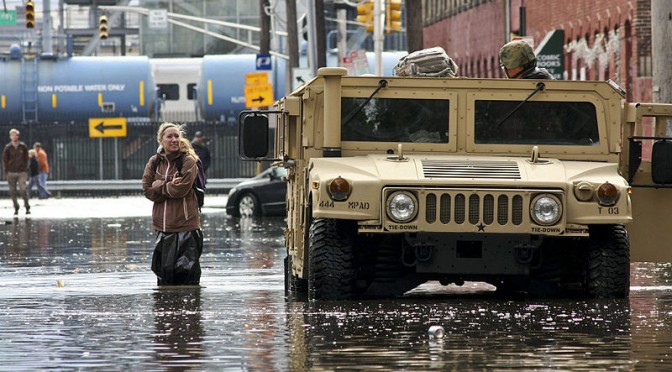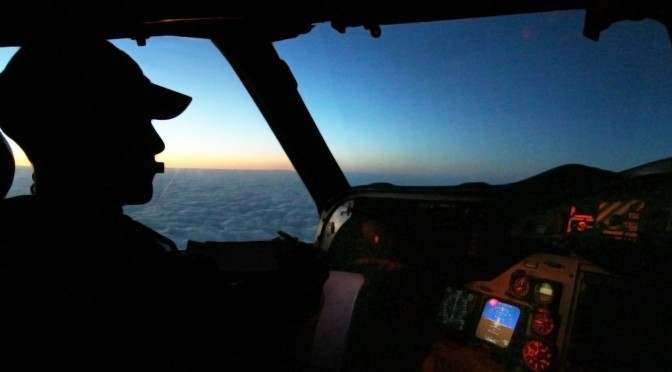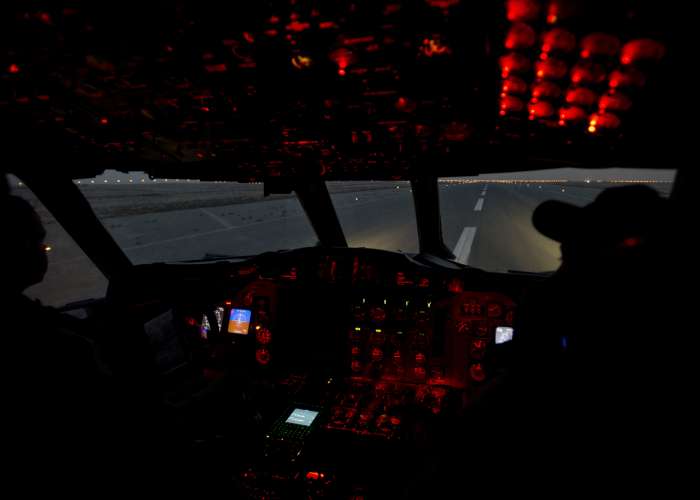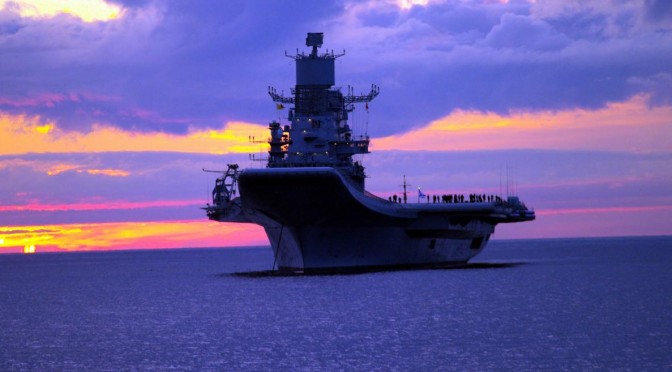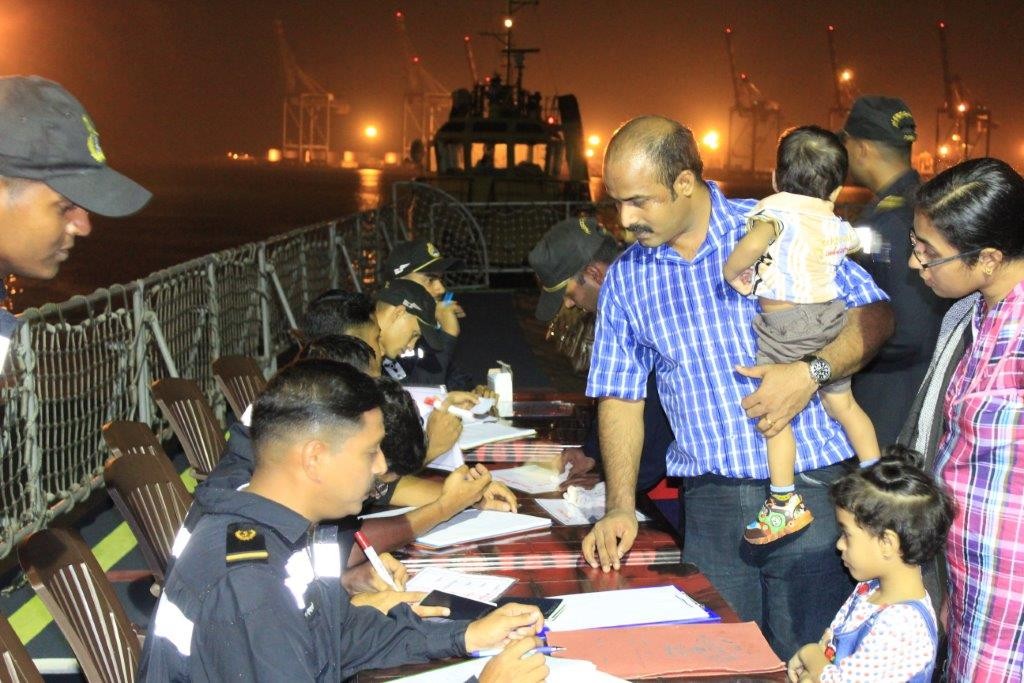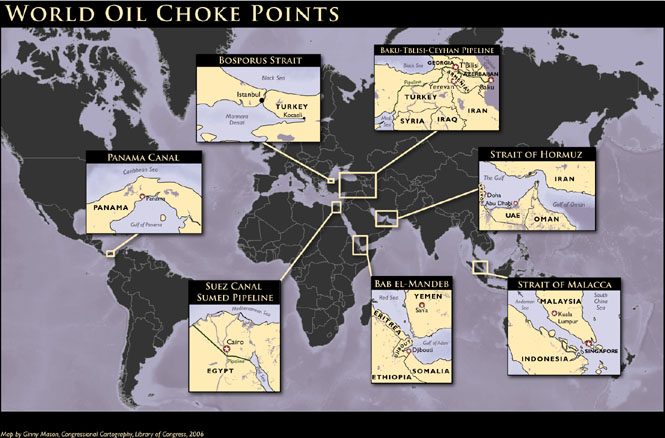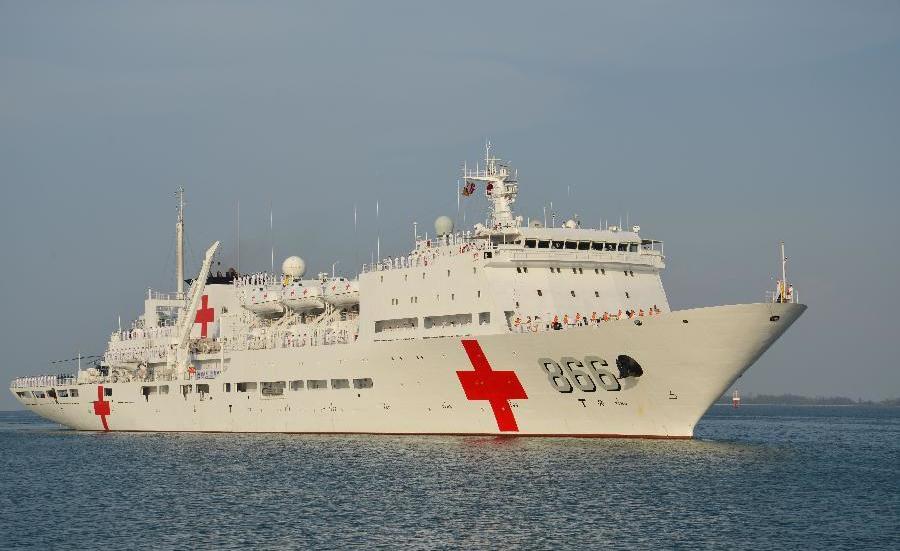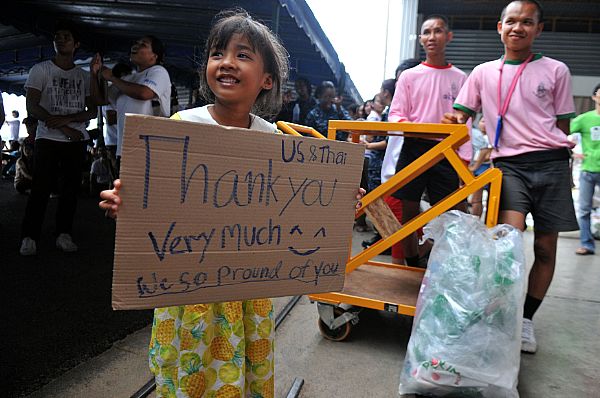By Robert C. Rasmussen
A Warm Sunny Day
It is a warm and sunny October evening in Cilegon, Indonesia. As the city of 416,000 moves through its afternoon rush, a strong shake is felt. It stops after two minutes, and then a loud explosion is heard coming from the west, with a large mushroom cloud enveloping the sky. Traffic on National Highway 3 is at a standstill. People are getting out of their cars trying to determine what has just happened. Some of them, realizing that the explosion has come from the Sunda Strait, abandon their vehicles, and start running south up a hill, as a thirty meter tsunami appears on the horizon heading towards the coast. Those who survive the tsunami are then enveloped in a cloud of burning ash.

Several hours later, local authorities are helpless, and the Indonesian military is completely overwhelmed. Reinforcements are being flown in from other parts of the country. The low-lying areas of Cilegon are completely destroyed, along with more than 1,500 towns and villages in both Banten and Lampung Provinces. At least five million people are estimated to be dead. The Prime Minister accepts an offer of aid from the Ambassador of the United States. At this point, the close to ten million more people who survived the disaster lack access to food, clean water, or housing. Furthermore, weather reports are showing that the first storm of the monsoon season will reach the affected area within the next 72 hours. Meanwhile, an Amphibious Ready Group transiting the Malacca Straits receives orders to sail to Cilegon. Its orders also indicate that the ARG Commander is to assume command of the Joint Task Force being formed from U.S. military personnel.
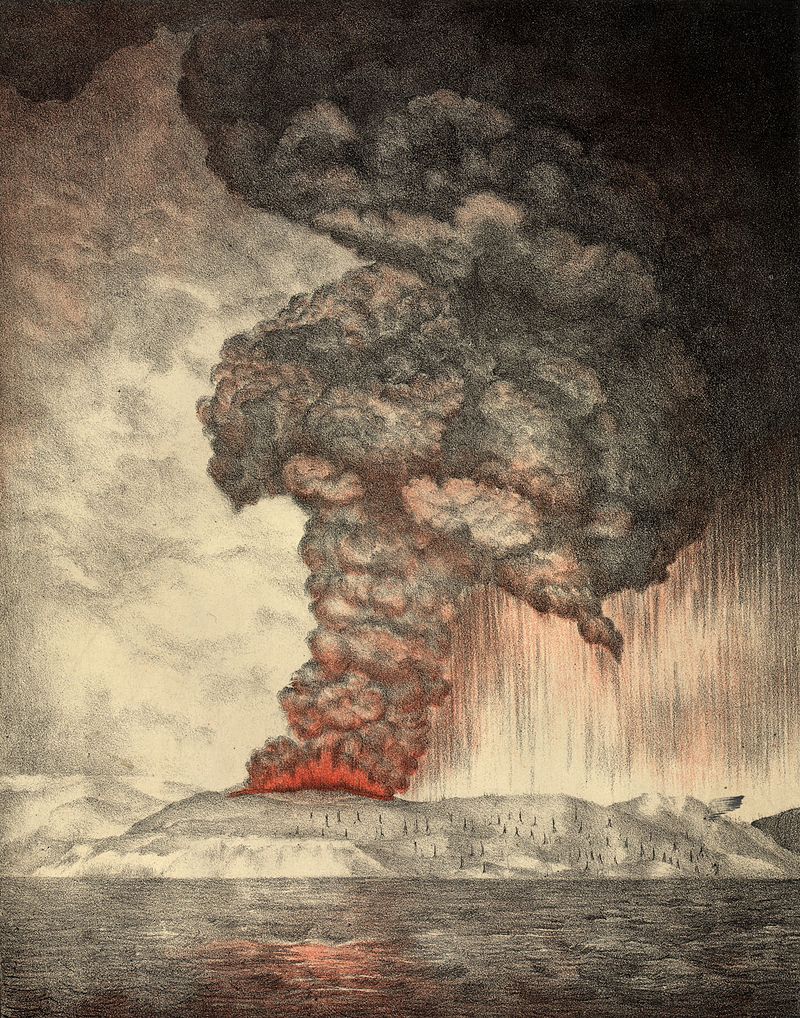
This disaster has happened before. The last major explosion of Krakatoa, a volcanic island situated in the Sunda Strait, occurred in 1883, causing a pyroclastic flow with a 50 km radius, and sent a thirty meter high tsunami across the Sunda Strait in all directions. The noise of the explosion was heard as far away as Alice Springs, Australia, and Mauritius. Skeletons found laying on pumice were found washing ashore in East Africa for several years afterwards. The official death toll was around thirty-six thousand. The area around Krakatoa has a significantly higher population today, and major eruptions of the mountain have been recorded as occurring between every 100-250 years.[1] It is not uncommon for disasters of a large magnitude to be followed by a subsequent event that exacerbate the conditions for survival, such as monsoon events, like Winter Storm Athena that followed a month after Hurricane Sandy.[2]
Introduction
In the scenario described above it is very likely that the assistance of the United States will be requested by the host nation, and it is very likely that in an archipelagic nation, such as Indonesia, naval forces will be the first to arrive. It is also distinctly possible that a Naval or Marine officer will be appointed as Joint Task Force Commander. The doctrine on how to respond to disasters or provide humanitarian assistance depends on where a Joint Task Force is responding and whether or not it is inside or outside the United States.
For Domestic Disaster Response/Humanitarian Assistance missions there is a set framework in the form of the Incident Command System (ICS), the National Incident Management System (NIMS), Multiagency Coordination System (MACS), and National Response Framework (NRF). These include a common operating language and procedures that allow for integration of responding agencies and unity of effort.[3] The major proponent of doctrine for domestic response within the Department of Defense is U.S. Northern Command.[4] The military forces that most commonly exercise these missions are within state military forces such as the Army & Air National Guard, as well as State Defense Forces[5] and Naval Militias in those states that have such organizations.[6]
When it comes to Foreign Disaster Response and Humanitarian Assistance, there is no common operating language, procedures, and organizational structures. Instead, the doctrine that is put forward for foreign response displays the common organizational structures needed for integration – namely where a commander should deploy Liaison Officers. However, this doctrine does not integrate common operating language and procedures to better facilitate the mission. Meanwhile, other agencies of the Federal Government, especially U.S. Agency for International Development’s Office of Foreign Disaster Assistance, not only utilize ICS and MACS in their response doctrine, but teach that doctrine to host nation response forces.[7]
Current Doctrine on Defense Support to Civil Authorities
During a domestic disaster response/humanitarian assistance operation, utilized doctrine focuses on Defense Support to Civil Authorities (DSCA) that is largely controlled by U.S. Northern Command (NORTHCOM). The design of the DSCA mission is largely built around supporting the United States’ federalist system. The most important laws relating to this doctrine are the Stafford Act of 1988, the Insurrection Act of 1807, and the Posse Comitatus Act of 1869.
The concept here is that all disasters are local disasters first. Under the Stafford Act and other supporting state legislation, when local governments are responding to a disaster and their resources become overwhelmed, they must first request assistance from surrounding counties under Emergency Mutual Assistance Compacts (EMAC). If those resources become overwhelmed, a County Executive may request the Governor to declare a State of Emergency, which then allows the Governor to allocate funding and deploy resources to support the affected area. In turn, if a state’s resources become overwhelmed, then the Governor will request EMAC resources from other states. If those resources become overwhelmed, a Governor may request the President to declare a Federal State of Emergency, which allows federal resources to be allocated to the response. During a State of Emergency declared by a Governor, State Military Forces may be utilized in the response – during a Federal State of Emergency, National Guard forces operating under Title 32 USC (Militia of the United States) orders may be utilized.[8]

Under the Posse Comitatus Act of 1869, there are limits to how the Armed Forces of the United States operating under Title 10 USC may be utilized for domestic response missions. [9] Title 10 forces cannot be used for direct response or humanitarian assistance, but can be used for various support activities. For example, during the response to Hurricane Sandy, Marines from the Wasp Amphibious Ready Group conducted an amphibious landing at Breezy Point, Far Rockaway, Queens, and began distributing meals and heater packs.[10] However, they were later withdrawn due to issues with the Posse Comitatus Act. Around the same time Joint Task Force Sandy (New York Army National Guard 53rd Troop Command) troops began arriving.[11] Meanwhile, the U.S. Army 19th Engineer Battalion’s Headquarters Company and two Engineer Companies deployed from Fort Knox, Kentucky, where they conducted pumping operations to mitigate flooding of twenty-seven stories of subterranean infrastructure across New York City, and the 249th Engineer Battalion provided prime power services, along with general support from the U.S. Army Corps of Engineers’ New York District.[12]

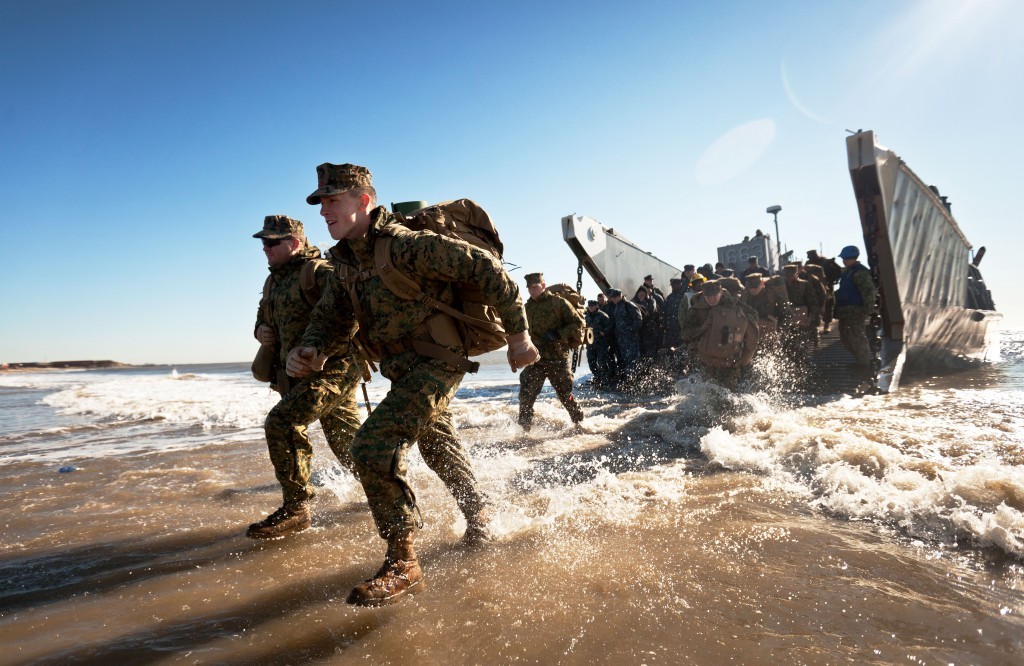
The provisions of the Insurrection Act of 1807 allow for the exceptions where Title 10 troops may be used for response to a disaster. In these provisions a disaster would have to lead to law and order to break down. Since all disasters are local, first Title 32 troops- both in the state of disaster, as well as those called in under EMAC must be unable to enforce order, and then federal troops can be utilized after the President has declared a Federal State of Emergency.[13] A great example of Title 10 troops being deployed to enforce law and order after a natural disaster was when the 82nd Airborne Division was deployed in the aftermath of Hurricane Katrina. This occurred primarily due to the failures of the initial response, and the fact that half of the Louisiana Army National Guard (256th Infantry Brigade Combat Team), was deployed to Iraq at the time.[14]

In order to facilitate the integration of military forces at all levels, the common operating language of ICS, MACS, and NRF, are taught to National Guard troops, and troops assigned to U.S. Northern Command. Incident Command System is organization at the tactical and operational level that allows for personnel from multiple agencies to integrate into mission-specific organizations to facilitate unity of effort- led by an Incident Commander. For example, during the response to the Deepwater Horizon oil spill, an ICS organization was created utilizing all agencies of the U.S. Government and the Incident Commander was Admiral Thad Allen, USCG (Ret).[15]

The Multiagency Coordination System (MACS) is the policy working group of the response. Such a group is facilitated by an Emergency Operations Center, and consists of policymakers with the ability to make strategic decisions. Their mission is to implement policies that assist the ICS organization responding to the disaster to better accomplish their mission. Conversely the National Response Framework (NRF) is a document that establishes agency responsibilities and roles in a variety of disaster responses.[16]
Current Doctrine for Foreign Humanitarian Assistance/Disaster Response
The doctrine for Foreign Humanitarian Assistance/Disaster Response is similar to the doctrine for Defense Support to Civil Authorities, but there is no common operating language or framework. The doctrine first looks at how a host nation requests assistance and how a mission is assigned to military forces in an area. When a disaster occurs, the host nation government requests assistance from the United States through the Ambassador. The Ambassador, through the Department of State, provides that request to the President, who approves or denies it. From that point the lead agency for coordination is the U.S. Agency for International Development through its Office of Foreign Disaster Assistance, which is similar to the role FEMA plays in domestic response.

From this point it is determined if defense support will be needed for the mission- if so it is requested through the Department of Defense, who in turn tasks the mission to the appropriate Geographic Combatant Command. In turn, the Geographic Combatant Commander will appoint a JTF Commander, who will provide resources. Once the Joint Task Force arrives on site, it must integrate with other agencies of the U.S. Government, host nation forces, and any International/NGO forces. How that integration occurs is completely up to ad-hocracy, coming up with an organizational structure on the fly.[17]
The doctrine primarily focuses on where to deploy Liaison Officers. It recommends deployment to a series of coordination centers for: the host nation Government, the U.S. Embassy, UN Country Team/Mission Headquarters, Information Centers, Intelligence Centers, and the list goes on. Most importantly, the focus is that the U.S. Government Joint/Interagency Task Force responding to this disaster has to respond immediately, but go through the entire process of integration and develop a common operating language simultaneously.

Recommendations for ICS Doctrine in Foreign Humanitarian Assistance/Disaster Response
ICS doctrine should be adapted to Foreign Humanitarian Assistance/Disaster Response, in order to help increase the efficiency of U.S. Armed Services response to foreign disasters. ICS is already being utilized by civilian U.S. Government agencies for their response doctrine, especially the USAID, which is the federal coordinating agency for foreign disaster response. The federalist system of disaster response currently utilized in statutes and doctrine is similar to foreign response. The United States is after all a supranational organization of fifty sovereign states (who have given up little chunks of their sovereignty). Each state has its own government structure and security forces (including military forces) that operate under the orders of a Governor, and the United States Government cannot intervene without the request of that Governor (except for limited circumstances). Such a system can be in place for international response.
A basic ICS education should be taught to all service members who may be deployed on a foreign HA/DR mission. This is a very simple syllabus, and could be taught over short periods of time, and would include curriculum already available through the FEMA Independent Study Program. The various centers where LNOs can be deployed can simply be defined as Emergency Operations Centers, and JTF Commanders can integrate at a minimum with other U.S. Government Agencies in an ICS Organizational HQ. The Ambassador, USAID Response Team, and Global Combatant Command Response Team can serve as a MAC Group for U.S. Government Response, and integrate with the Host Nation’s policymaking group. A Joint Interagency Task Force at the Global Combatant Command can serve as a reach back center for the MAC Group, and in turn reach back to National Command Authority in Washington.
In order to facilitate an integrated doctrine for both Defense Support to Civil Authorities and foreign HA/DR, it would be important to centralize proponency for that doctrine. The best place to do so would be within the Political-Military Affairs Branch of the J-5 Directorate (Strategic Plans & Policy) of the Joint Staff. At a minimum, integrating this common operating language and structure into the doctrine for Foreign HA/DR will allow U.S. Military Forces to integrate with other U.S. Government agencies. Domestic and foreign disaster assistance should utilize doctrine that is built around integrating military forces into a whole of government response, whether or not they are forces from the National Guard under state control integrating with state and federal agencies or federal troops integrating with host nation response agencies during a disaster.
Conclusion
Both domestic and foreign Disaster Response/Humanitarian Assistance missions are essentially the same mission, but simply occur in different spaces. Both missions should have the same doctrine, in order to help U.S. military forces integrate with other response forces quickly in order to more efficiently respond to disasters. Integrating the ICS, MACS, and NRF doctrine from FEMA into the training for active duty forces that may perform HA/DR abroad will help achieve the goals of that mission.
Robert C. Rasmussen is a Second Lieutenant in the New York State Guard, and currently serves as the Aide-de-Camp to the Commanding General of the New York State Guard. He holds a MA in International Relations and a CAS in Security Studies from Syracuse University, and BA in International Relations & Geography from SUNY Geneseo. He served on State Active Duty in support of Operation Hurricane Sandy from November 2012-January 2013. His views are his own and do not reflect those of the New York State Division of Military & Naval Affairs.
[1] Dunk, Marcus, “Will Krakatoa Rock the World Again? Last Time It Killed Thousands and Changed the Weather for Five Years, Now It Could Be Even More Deadlier…” Daily Mail Online, 31 July 2009, http://www.dailymail.co.uk/news/article-1203028/Will-Krakatoa-rock-world-Last-time-killed-thousands-changed-weather-years-deadlier.html.
[2] Author participated in disaster relief operations attached to Task Force Blackheart (642nd Aviation Support Battalion, NY ARNG) and Team Sandy (Joint Task Force Empire Shield) from 19 November 2012-22 January 2013.
[3] Federal Emergency Management Agency, “National Incident Management System,” https://www.fema.gov/national-incident-management-system.
[4] Department of Defense, “Joint Publication 3-28: Defense Support to Civil Authorities,” http://www.dtic.mil/doctrine/new_pubs/jp3_28.pdf, 31 July 2013.
[5] Department of Defense Inspector General, “Evaluation of Department of Defense Interaction with State Defense Forces,” 30 April 2014, http://www.dodig.mil/pubs/documents/DODIG-2014-065.pdf.
[6] McNeil, Deano, “Naval Militia: an Overlooked Domestic Emergency Response Option,” In Homeland Security, 30 April 2015, http://inhomelandsecurity.com/naval-militia-an-overlooked-domestic-emergency-response-option/.
[7] U.S. Agency for International Development, “Disaster Risk Reduction- East Asia & the Pacific,” 30 September 2012, https://www.usaid.gov/sites/default/files/documents/1866/eastasia_drr_fs01_09-30-2012.pdf.
[8] Federal Emergency Management Agency, “IS-700: Introduction to the National Incident Management System,” 31 October 2013, https://training.fema.gov/is/courseoverview.aspx?code=IS-702.a.
[9] National Guard Association of the United States, “NGAUS Fact Sheet: Understanding the Guard’s Duty Status,” http://www.ngaus.org/sites/default/files/Guard%20Statues.pdf.
[10] II Marine Expeditionary Force, “Marines Land at Breezy Point,” 9 November 2012, https://www.youtube.com/watch?v=XZhZFRRgtWg.
[11] Author served with the New York State Guard Element of Headquarters, Joint Task Force Sandy from 3-19 November 2012.
[12] U.S. Army Corps of Engineers New York District, “Army Corps Responds to Hurricane Sandy,” New York District Times, January 2013, http://www.nan.usace.army.mil/Portals/37/docs/nydistricttimes/2013/New%20York%20District%20Times%20Hurricane%20Sandy%20Edition.pdf.
[13] Brinkerhoff, John, “Understanding the Posse Comitatus Act and the Insurrection Act,” Defense Technical Information Center, 2008, http://www.dtic.mil/dtic/tr/fulltext/u2/a494995.pdf.
[14] Department of the Army, “The Army Responds to Hurricane Katrina,” 10 September 2010, http://www.army.mil/article/45029/The_Army_response_to_Hurricane_Katrina/.
[15] Marine Log, “Thad Allen Named National Incident Commander for Deepwater Horizon Spill,” 1 May 2010, http://www.marinelog.com/DOCS/NEWSMMIX/2010may00010.html.
[16] Federal Emergency Management Agency, “IS-701: NIMS Multiagency Coordination System,” 12 October 2010, https://training.fema.gov/is/courseoverview.aspx?code=IS-701.a.
[17] Department of Defense, “Joint Publication 3-29: Foreign Humanitarian Assistance,” 3 January 2014, http://www.dtic.mil/doctrine/new_pubs/jp3_29.pdf.
Featured Image: Soldiers assist residents displaced by Hurricane Sandy in Hoboken, N.J., Oct. 31, 2012. The soldiers are assigned to the New Jersey National Guard. U.S. Army photo by Spc. Joseph Davis.

